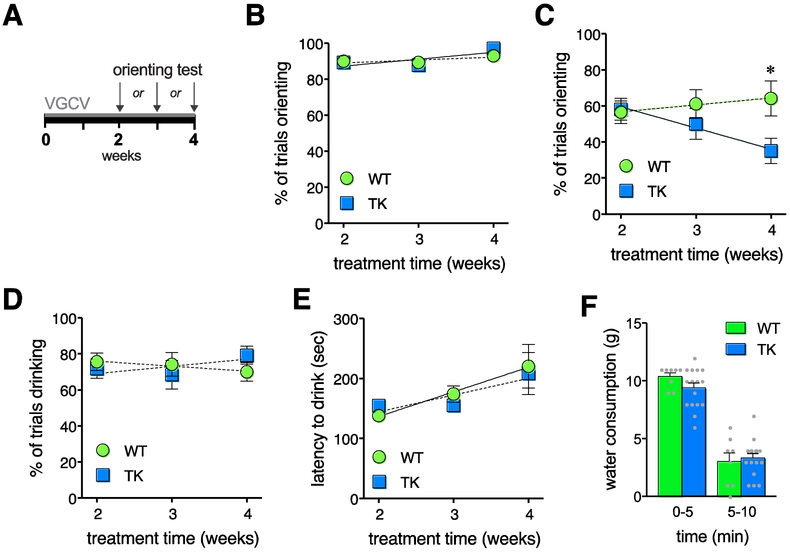Figure 2.
Orienting response rate in rats treated to stop neurogenesis for different periods of time. A. Experimental time course showing 2, 3, or 4 weeks of VGCV treatment prior to the one-day test. B. Orienting in the absence of a water bottle was unaffected by genotype (F1,84 = 1.036, p = .31 for slope; F1,85 = 0.084, p = .77 for elevation). C. When animals were drinking, WT and TK rats showed significantly different changes over treatment time (slope: F1, 75 = 4.218, p = .0435), with TK rats showing decreased orienting over time (deviation from zero slope, F1,36 = 4.976, p = .0320; slope = −11.71±5.249) and WT rats showed no detectable effect of treatment time (F1,39 = 0.508, p = .4802; * indicates p = .0072 versus WT at the same time point by Sidak multiple comparisons test. D. The percentage of trials in which rats were drinking did not differ across genotype (slope F1,75 = 1.383, p = .2432; elevation F1,76 = .000, p = .992). E. The latency to begin drinking water during the exploration session showed no effect of genotype (slope F1,75 = 0.3437, p = .5594; elevation F1,76 = 0.085, p = .771). F.Water consumption in the home cage did not differ by genotype (main effect of genotype, F1,22 = 1.003, p = .3276; main effect of time period, F1,22 = 115.9, p < .0001; interaction, F1,22 = 1.106, p = .3044), suggesting that motivation to drink is unaffected by loss of adult neurogenesis.

